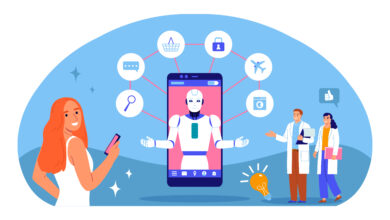How Practo evolved from being a SaaS platform for doctors to a full-fledged healthcare ecosystem
“These three core principles remain key to what we continue to do and build at Practo,” Abhinav tells YourStory. He adds that they knew they had to work and develop the product and tech in a step-by-step manner. The duo had decided to first start by solving to make doctors and quality healthcare more accessible – making it easy for healthcare professionals and patients to connect.
In 2008, the digital healthcare ecosystem in India was largely non-existent. A few doctors relied on tech products developed outside the country, which were different from the requirements of Indian doctors.
“The first step thus was to work with the doctor community. We decided to remove the administrative work to help manage their practice so that they could focus on their expertise. That was the first product – Practo Ray, which was released in 2008. It was a software code Shashank and I wrote. We had focused on smaller, single-doctor clinics and built the product with both the doctors and patients in mind,” explains Abhinav.
Spending time with clinicians
The idea was to use emerging technologies to revamp clinical functioning across India and enhance the patient experience by creating a software solution for doctors to efficiently manage their appointments and scheduling.
Shashank spent most of the days in clinics, interacting with doctors to understand the intricacies and challenges. It helped the team realise the needs of the doctors, and how the team could go about implementing them.
In an earlier conversation with YourStory, Shashank had said, “My product insights never came from an office. I got the pulse of the space by observing what the patients were doing and talking about in those very clinics. The process was very subconscious. I needed to look through the cracks to find out the problems in the market.”
Practo Ray, the SaaS platform, managed the affairs of small practices in terms of appointment scheduling, patient record maintenance, billing, accounting, and analytics – catering to the SME segment. It formed the basis of all future products for Practo.
The first traction for Ray was released in early 2009 and by 2012, it had onboarded 10,000 doctors and had a team of eight people.
Adding the B2C side
“We were selective in what we built, and this allowed us to build a product as per the customer needs. The next challenge was getting doctors to migrate as most had their systems on older technologies. We had built a lot of our initial tech on the web where we would send reminders via SMSes to doctors and patients,” explains Abhinav.
However, they encountered regulations around the ‘do not call registry’ due to which they were unable to make calls to the patient.
Another challenge, Abhinav adds, was to make the product reliable and more responsive. “If Ray stopped working, the business for the doctors would also stop. So we primarily focused on solving for any redundancies and challenges,” he adds.
Once the B2B product got the initial traction, the team focused on the consumer and began with the B2C platform — Practo Search. The website was a doctor discovery and appointment booking platform for consumers.
“With Practo Ray onboarding doctors, Practo Search would allow patients to discover them. The focus was towards helping patients find and interact with the relevant Healthcare Provider (HCP) based on their needs. This is at the core of Practo’s vision,” he explains.
Gathering data
The team worked on combing through factual information and gathered the responses from past patients to understand the basis of a patient’s search query – specific health problem, need for convenience etc. This helped in giving consumers relevant options while making choices.
“To achieve this, the team did some extensive user behaviour study and devised an algorithm that determines which HCPs are displayed on the listing, and the order in which they are listed,” says Abhinav. This is a proprietary algorithm developed by Practo and takes several parameters into consideration.
“Furthermore, this position is dynamic and is completely determined by the patient’s search query, location, filters, and sorting options used,” he adds.
One of the factors that the team needed to keep in mind is that looking for healthcare is an anxiety-inducing experience. In the early days, it took time for the information to reach.
Now, Practo has accumulated over five million patient stories over the years. The healthtech startup looks at 20 million patients every month. “The idea is to remove the friction and make the experience completely seamless,” explains Abhinav.
Making healthcare available 24×7
Around 2012, the team moved ahead to ensure that patients had 24×7 access to healthcare. It led to the launch of the Practo App.
However, more work is yet to be done. Tech in healthcare has not been implemented fully, which means not a lot of legacies exist.
“We worked closely with our partners to understand their needs, building solutions to solve their current and future needs. We’re now looking forward to more standards in health data exchange,” says Abhinav.
For efficient time management, 24×7 booking for patients, hassle-free management of appointments, and to minimise the number of patients no-shows, healthcare providers are advised to enable the booking of appointments online. With this option, patients can see real-time availability of doctors, which helps to confirm appointments.
“API integration helps connect, especially with large hospitals, to solve for online appointment booking and real-time availability,” he explains.
The growth of telemedicine
Since the beginning of March this year, when the pandemic hit India, Practo, along with other healthcare platforms, has been active in growing its telemedicine and online consultancy segment.
Queries regarding fever, cough, cold, sore throat, and body ache have increased by 200 percent. Teleconsults on Practo have witnessed an average increase of over 100 percent per week, with 53 percent of all GP eConsults related to coronavirus. Most of the queries come from people in the age group of 20-30.
Until March this year, close to 50 percent of all teleconsult requests that Practo receives come from Tier-II and III cities. However, queries also come from Bengaluru, Delhi-NCR, Hyderabad, Mumbai, Pune, and Chennai.
“What was a convenience a few years ago has slowly become a necessity,” Abhinav quips.
He adds that the team built the first iteration of its telemedicine solution in 2017 with three key principles in mind:
- Connect anytime – Smart matching algorithms connecting the patient to a verified RMP, 24x7x365
- Flexibility in communication – An actual appointment is mimicked either via chat, audio, or video, where patients and doctors can talk asynchronously as well as share the necessary info (records, photo etc).
- Fast and seamless — Real-time response to queries, prescriptions during the chat and an option to buy meds and book tests, if required.
An integral part of telemedicine is to ensure that the patient can order medicines and lab tests, as well as storing health records securely. By scaling up telemedicine, the team ensures that the doctor understands the platform in a way where they can view the entire patient history.
It maps the entire journey of a patient, right from booking an appointment, finding a lab, getting a second opinion, patient experience feedback, medicine reminder, to delivering medicine at the patient’s doorstep.
Today, while Practo has a strong B2C focus, the B2B business enables the team to strengthen its connect with users and providers. It competes with several healthtech startups like mfine, 1mg, etc.
In the 12 years since its launch, the platform has gained over 180 million users, five million patient stories, and enables 10 million hours of doctor consultation per month. The platform has over 76,000 clinics and hospital partners.
“Healthcare is a vast space and we can solve a lot of real problems. We have the responsibility to solve them in the right way. Health is a thing which can have a major impact, and that’s why we, as a company, have to be very careful about the products we build and ensure that it solves a real need with zero friction,” Abhinav concludes.
Source: Yourstory




